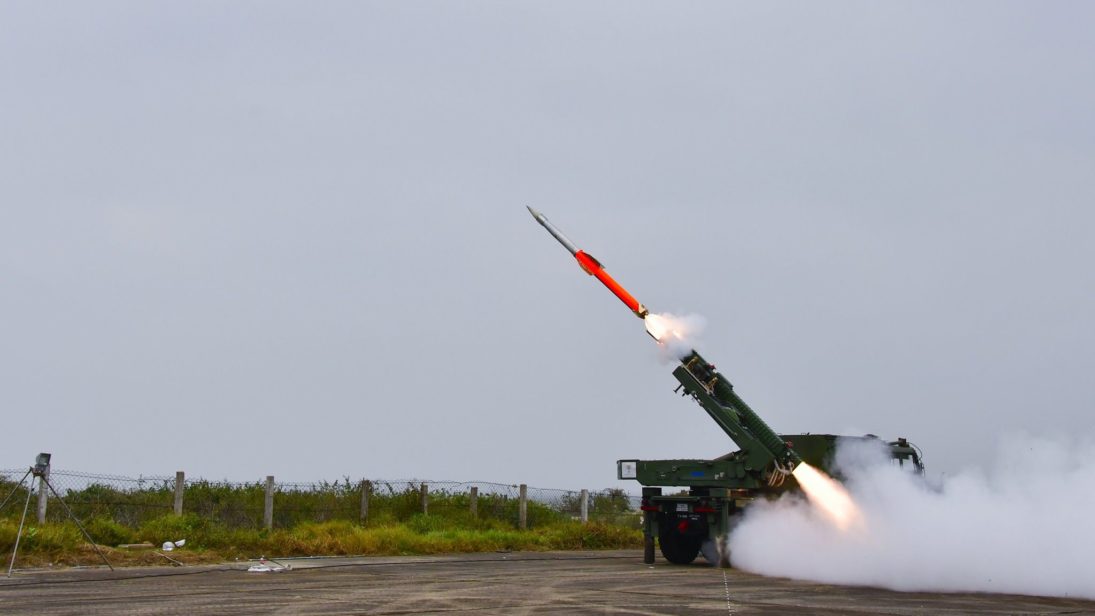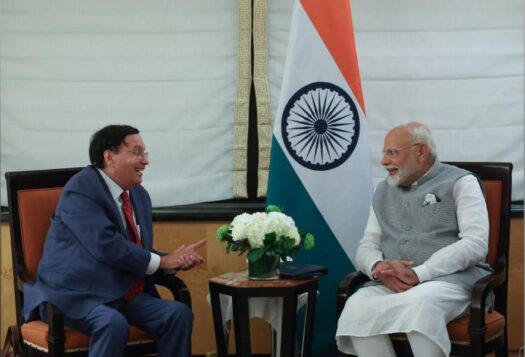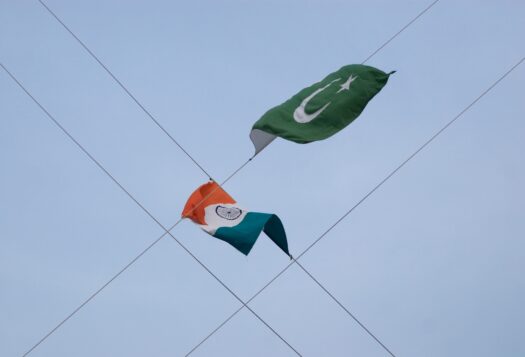
Since each country’s nuclear tests in 1998, India and Pakistan have witnessed multiple crises and near-misses, including escalating to the point of kinetic actions and raising the specter of war. Today, both countries find themselves in the midst of tensions once again in the aftermath of India’s revocation of Jammu and Kashmir’s special status, and concerns about unbridled escalation between the dyad have been repeatedly raised by Pakistan’s Prime Minister Imran Khan. The important question now is what factors could compel both or either side to escalate in the event of a conflict.
In arguably the most influential work related to escalation, appropriately titled “On Escalation,” one of United States’ greatest nuclear strategists, Herman Kahn, defined escalation as a: “‘competition in risk-taking,’ or at least resolve, and a matching of local resources, in some form of limited conflict between two sides.” Furthermore, Kahn argues that it is the reaction of the adversary that is likely to deter escalation, rather than the costs of the process itself. Two things are noteworthy in Kahn’s discussion of escalation. First, it is the intent of the warring parties that determines how the cycle of escalation plays out. And second, states must be willing to incur costs and use available means in order to up the ante. This makes discussing the tools that states have at their disposal to step onto the escalation ladder all the more important.
Today, both countries find themselves in the midst of tensions once again in the aftermath of India’s revocation of Jammu and Kashmir’s special status, and concerns about unbridled escalation between the dyad have been repeatedly raised by Pakistan’s Prime Minister Imran Khan. The important question now is what factors could compel both or either side to escalate in the event of a conflict.
In her recent article titled Emerging Technology and Intra-War Escalation Risks, Caitlin Talmadge examines the relationship between emerging technologies and escalation. Talmadge challenges the conventional thinking that emerging technologies act as an independent variable which is, in itself, sufficient and necessary for escalation. Instead she argues that technologies are an intervening variable that might be necessary for escalation in some cases but alone are not an independent causal factor. She further posits that the incendiary forces for escalation lie in the realms of politics and strategy. In other words, her article termed technology as a facilitator of a strategic and political decision to escalate, rather than an instigator of escalation. Talmadge advanced this argument by testing the role of technology in escalation (instigating versus intervening) against three case studies from the Cold War.
The Politics of Escalation
The essence of Talmadge’s article is her argument that the politics of escalation precedes the technology necessary to achieve it. She fittingly writes that the urge to intentionally escalate a conflict may lead to a search for escalation enabling technologies – commensurate with the Clausewitzian claim that war is an extension of politics by other means. According to the author, this holds true for vertical escalation (escalating the intensity of the conflict) and horizontal escalation (expanding the conflict across different fronts). For instance, as Talmadge notes, NATO’s provocative 1954 MC 48 strategy in the early years of the Cold War was steeped in the notion of massive retaliation even though the technology needed to carry-out these threats was still rudimentary. Professor Talmadge reasoned that, contrary to the technology acting as an instigator of crises, in the MC 48 case, “technologies and intentional escalatory threats moved in opposite directions.” As technology improved to the point that MC 48 could theoretically be carried out, policymakers were paradoxically beginning to approach escalation more cautiously.
The MC 48 case, along with Talmadge’s other case studies, suggest a tenuous connection between technology and escalation. It is worth noting, however, that Talmadge does not negate the role that technology can, in some cases, play in escalation. Talmadge especially delves into the role of technology in inadvertent escalation – particularly if it increases the perception of first-mover advantage. However, she maintains that technology on its own is not driving escalation, rather it is the intent on the part of political leaders to use such technologies to manipulate risk.
By looking at post-nuclearization crises and the overall strategic environment between India and Pakistan, it is evident that Talmadge’s framework also applies to escalation dynamics in South Asia. The Kargil conflict of 1999 is an ideal case study to determine what role technology plays in escalation on the subcontinent given that the conflict started on the heels of the nuclear tests of both India and Pakistan, and the role of nuclear weapons in encouraging Islamabad to instigate Kargil has received scholarly attention.
However, there is little evidence to determine whether the acquisition of nuclear weapons, a serious technological leap, encouraged Pakistan to launch Operation Koh-e-Paima in the Kargil sector. That an old operational plan was implemented in Kargil, despite the qualitative change in technology, is reason enough to determine that technology was not an instigating variable in the escalation leading to Kargil. Pakistan’s Kargil gambit was also connected to political and strategic goals like internationalization of the Kashmir dispute, which were motivating factors prior to its nuclear weapons development. This set of evidence keeps with Talmadge’s argument that escalation is more of a function of political strategy than of the mere existence of technologies.

Additionally, India and Pakistan locked horns in the Pulwama-Balakot crisis earlier this year. After an air duel left the Indian military questioning the technological strength of its military equipment, Indian Prime Minister Narendra Modi lamented the absence of the Rafale aircraft in the aerial combat with Pakistan. This aircraft would give the Indian Air Force the ability to engage targets from a distance of about 300 kilometers without being detected, and has been called a “game-changer” by India’s new Air Chief Marshal, RKS Bhadauria.
These statements highlight two things. One, the non-availability of a better aircraft did not preclude India from escalating the conflict by launching airstrikes inside mainland Pakistan. India’s decision to escalate was not a product of the available technology, but of India’s resolve to punish Pakistan for its alleged role in the Pulwama attack. Two, with the potential for future crises in mind, India is looking for the Rafale aircraft to bolster its air combat capabilities. Both of these views are in line with Talmadge’s broad argument: technology is not an instigator of escalation, rather it is an intervening variable that is one of the enablers of escalation.
The Fog of War
That said, the degree of the stand-alone role of technology in conflict-escalation in South Asia cannot be fully explained through a Cold War framework. Though the author’s select group of case studies highlight the less direct role of technology in escalation or escalatory risks, their lessons may not hold true in case of South Asia. Firstly, the level of power asymmetry, mistrust, and geographical proximity between India and Pakistan, and those between erstwhile Cold War rivals are different. As Professor Talmadge notes, concerns about advancements in technologies are not misplaced, but these fears may be more pronounced in South Asia. Apprehensions of first-mover advantages – the comparative advantage of striking first in a conflict – could be exacerbated in South Asia because improvements in technologies of one side make the other side more insecure, especially if it considers itself a weaker power. This is more so because of geography and the ongoing re-emergence of the India-Pakistan conflict rather than the lethality of technology. As skirmishes between India and Pakistan, which have the potential to quickly escalate, along contested borders are not uncommon, in South Asia’s strategic and geographical landscape, perceptions of first-mover advantage may be more debilitating than they were during the Cold War.
In a volatile and potentially-explosive environment in South Asia, acquisition of technologies that create a first-mover advantage could play an instrumental role in escalation.
In a volatile and potentially-explosive environment in South Asia, acquisition of technologies that create a first-mover advantage could play an instrumental role in escalation. New Indian technologies, such as the S-400 and the Arihant, could create the perception in Pakistan that India has an advantage that would allow it to strike Pakistan first while simultaneously undermining Pakistan’s retaliatory capabilities. This could either embolden an India that is giving mixed signals about its no first use (NFU) policy or compel Pakistan to misconstrue Indian signals. Similarly, Pakistan’s tactical nuclear weapons could be viewed by India as destabilizing. India could view Pakistan as an adversary more likely to use nuclear weapons early on in a crisis, tempting it to pre-empt Pakistan by a decapitation strike. It could also compel India to shift its nuclear-use doctrine and peace-time deployments. All of these scenarios increase the risks of escalation, both intentional and inadvertent. Thus, technology can be perceived to play more of an instigating role in South Asia than it was during the Cold War. It should be noted, however, that even in South Asia the main propellants of escalation will dwell in the arenas of policy and strategy – in line with Talmadge’s argument – and the race to acquire new nuclear and conventional technologies may create greater instability by contributing to a perception among decision makers that they can control risk and escalation.
What Next?
Talmadge’s article is instructive for policymakers and scholars dealing with deterrence and escalation, as it assigns a role to emerging technologies in the game of escalation. Her framework that labels technology as an intervening variable is applicable to escalation dynamics in South Asia as the main origins of escalatory behavior are found in policy and strategic approaches of India and Pakistan. However, the Cold War lens used by Talmadge to support her argument does not entirely befit South Asia. Growing mistrust and geographical contiguity between India and Pakistan make marginal improvements in technology by either side an important escalation-fuel, factors that accord a greater degree of independence to technology as a variable in an India-Pakistan escalation.
Researchers looking at the impact of technologies on conflict escalation could further explore the following: how a change in balance of power as a result of technological improvements will affect decision-making in peace-time? This will greatly help discern the stand-alone role that technologies play in transitioning from peace-time to wartime. One other question that deserves an inquiry is this: how does advent of cutting-edge technologies affect conflict resolution efforts between adversaries? Findings on this research could help draw-out the impact of technologies on not only on escalatory potential, but on de-escalation as well.
Editor’s Note: In an ongoing series aimed at bridging the divide between policy analysis and academic scholarship, SAV contributors review recent articles and books published by leading scholars to evaluate the latest theoretical and analytical debates on strategic issues and their implications for South Asia. Read the series here.
***
Image 1: DRDO India via Twitter (cropped)
Image 2: Pramod Pushkarna/The The India Today Group via Getty Images


